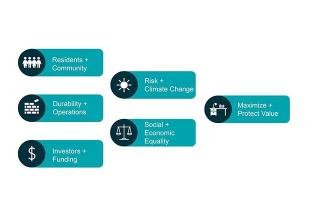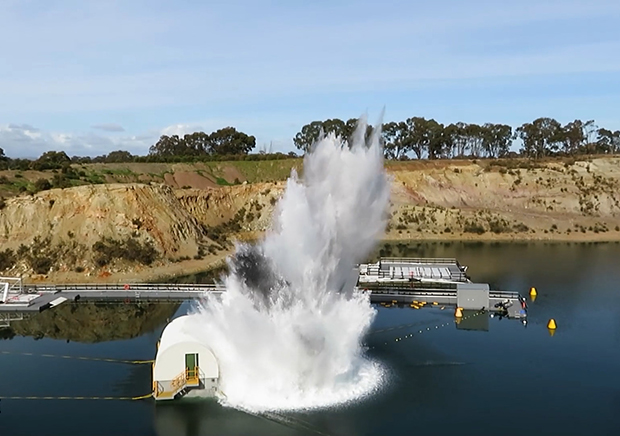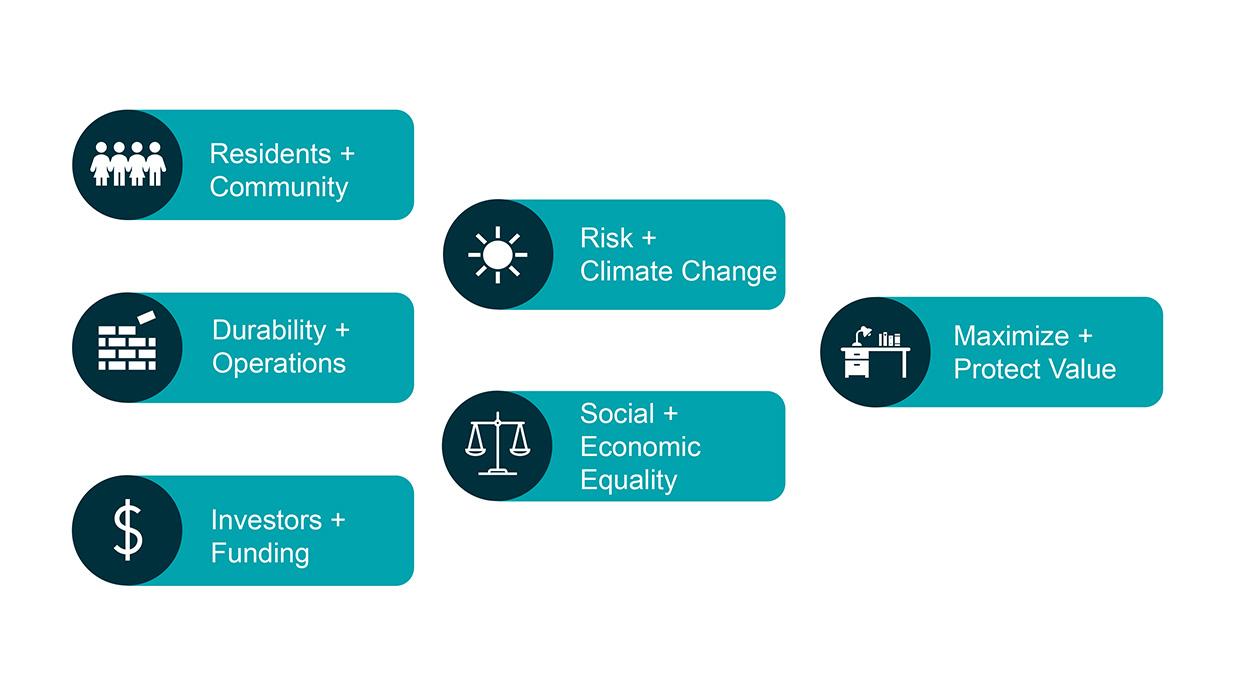
Climate Action: Sustainability & Resilience Frameworks


 Thornton Tomasetti
Thornton Tomasetti
Integrating sustainable building practices and resilience planning enables us to combat climate change and prepare for the uncertainties it brings while providing stakeholders with long-term adaptability to changing conditions. This week in our continuing series showcasing how engineers and scientists can play a key role in addressing the short- and long-term challenges of climate change, our latest blog explores how Thornton Tomasetti’s Sustainability and Resilience team applies comprehensive, custom frameworks—adaptable to the latest climate science and technological advancements—to a variety of projects.
Sustainability and Resilience Frameworks are a component of our approach to climate change mitigation and adaptation. Climate adaptation, which refers to the resilience of communities and the ability to sustain community needs over time, is applied to multiple project typologies, including planning, design and policy for adaptive communities and buildings.
Motivation
Greenhouse gases contribute to global warming and climate change, and we need to adopt sustainable building practices that reduce energy consumption, utilize renewable resources, and minimize waste to significantly curb these emissions. However, we also know that the emissions from today will contribute to tomorrow’s changing climate and so we also need to build resilience to combat those future uncertainties.
Sustainability and Resilience Frameworks may be used proactively to integrate long-term solutions into planning and maintenance programs. Sustainability Frameworks encourage teams to identify and implement strategies that support the long-term goals of the community or project from an early planning stage and puts a high value on integrated stakeholder engagement.
FEMA defines resilience as “the ability to prepare for threats and hazards, adapt to changing conditions and withstand and recover rapidly from disruptions.” Due to the wide range of potential climate impacts, resilience calls for a multifaceted strategy that meets the needs of a diverse set of stakeholders, including but not limited to engineers, owners, government officials and local community members. Resilience Frameworks provide structure to planning, organizing and tracking project progress.
Designers and engineers can develop and/or follow Sustainability and Resilience Frameworks throughout project completion. An original framework that can be tailored to fit specific project needs is seen in the figure below.

Diagnose
Whether you are aiming to increase the resilience of a single building or a portfolio of properties, the Diagnose phase within a Resilience Framework establishes a baseline of existing hazards and vulnerabilities that identifies the overall level of risk.
Individual climate hazards, like extreme precipitation and sea level rise, are reviewed from through the lens of historical, current and projected conditions in terms of frequency and intensity. Compounding impacts, such as the exacerbation of wildfires that can coincide with extreme heat, are also considered.
Vulnerabilities are based on the client’s assets, including historical site failures and operational capacities. Assets are evaluated in terms of different criterion including people, business operations, physical assets, area-wide considerations, revenue and reputation. Assets are also considered based on the client’s priorities.
Sustainability Frameworks often utilize third-party certification programs as a main identifier of sustainability performance. Evaluation of an asset against certification programs that focus on design, construction or continued operations can provide project teams a comparative assessment of sustainability achievements against other similar assets. Such programs include the Leadership in Energy and Environmental Design (LEED) programs for building design and construction and operations and maintenance, The WELL Building Standard and The Living Building Challenge (LBC).
For organizations that are looking to assess the sustainability of many assets, several public reporting Sustainability Frameworks exist to provide a forum for comparative peer evaluation. Such programs include the Global Real Estate Sustainability Benchmark (GRESB), the Carbon Disclosure Project (CDP), the Global Reporting Initiative (GRI) and the Sustainable Accounting Standards Board (SASB).
Strategize
The Strategize phase includes the investigation of an operational baseline to develop desired targets and performance levels. The owner’s priorities, project timeline, available resources and other unique project factors are integrated into a sustainability and resilience roadmap. Roadmaps are designed be adaptive to meet changing demands or integrate new technologies. Hence, an extensive list of sustainability and resilience strategies are deliberated among stakeholders. Since resilience reduces the risk gap between mandated codes and climate demands, an iterative process of identifying appropriate design criteria must include practical and affordable strategies.
Investment guidance builds the client’s confidence in sustainability and resilience measures and resource planning. Our Sustainability and Resilience team can identify and procure financial resources for external funding, like FEMA grants or governmental rebates and tax incentives. With available funds, allocating specific monetary streams to near and long-term investments is recommended.
Sustainability and resilience measures can be in reference to published standards and leading public frameworks, including:
- FEMA Hazard Mitigation Grant Program
- Institute of Sustainable Infrastructure Envision Framework
- LEED, WELL, LBC Certification Programs, Passive House
- Municipal Climate Resiliency Design Guidelines
- REDi Rating System
- US Resiliency Council Certified Rating
- Waterfront Edge Design Guidelines (WEDG)
Implement
Our Sustainability and Resilience team is dedicated to overseeing projects throughout completion. Regular check-ins with appointed team members and relevant stakeholders ensure that all project components are accounted for. To confirm that sustainability and resilience components are effectively incorporated, oversight is provided for the implementation of policies, strategies, plans, codes, ordinances and certification or reporting programs.
A customized Sustainability and Resilience Framework offers the advantage of being replicable. For instance, we recently conducted a site assessment for a real estate developer’s master planned community. We provided guidelines and metrics for sustainability, climate resilience, and structural, façade and site development integrity. Our aim was to develop an evaluation framework that can be replicated, serving as a road map for upcoming master planned communities. This framework focuses on identifying opportunities for environmental enhancements across the entire portfolio and ensuring effective response to regional climatic risks.
Monitor, Manage and Improve
As climate science is updated, standards are released and technology improves, our Sustainability and Resilience team continues to monitor, manage, and improve ongoing project components. Using these frameworks in an iterative process; revisiting the cycle on a regular basis is imperative for success.
Climate change is one of the biggest challenges facing our society. And because it affects everyone, it demands our creativity, passion and collaboration to build a better, more enduring world. See how Thornton Tomasetti is one of the only firms with the expertise to help you think holistically about a range of steps to address climate change.










